C Section Belly Bands. Do They Work?
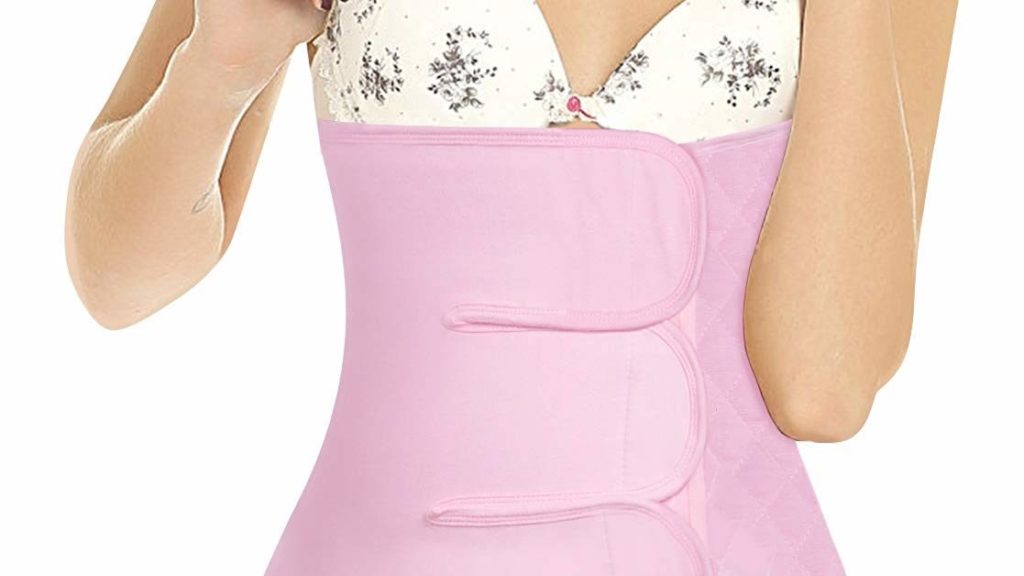
Let’s talk C Section Belly Bands. (Also referred to as postpartum belly wraps, binders, or belts).
The idea is that the material protects the surgical incision, while the belly binder’s compression helps decrease postoperative pain (among other benefits).
But do they really “work”?
An OB-GYN from Beverly Hills explains: “We’ve been prescribing c-section recovery binders for a long time… with obstetrics, these wraps help women recovering from a vaginal delivery or a cesarean section with their posture, abdominal and back support, and self-confidence.”
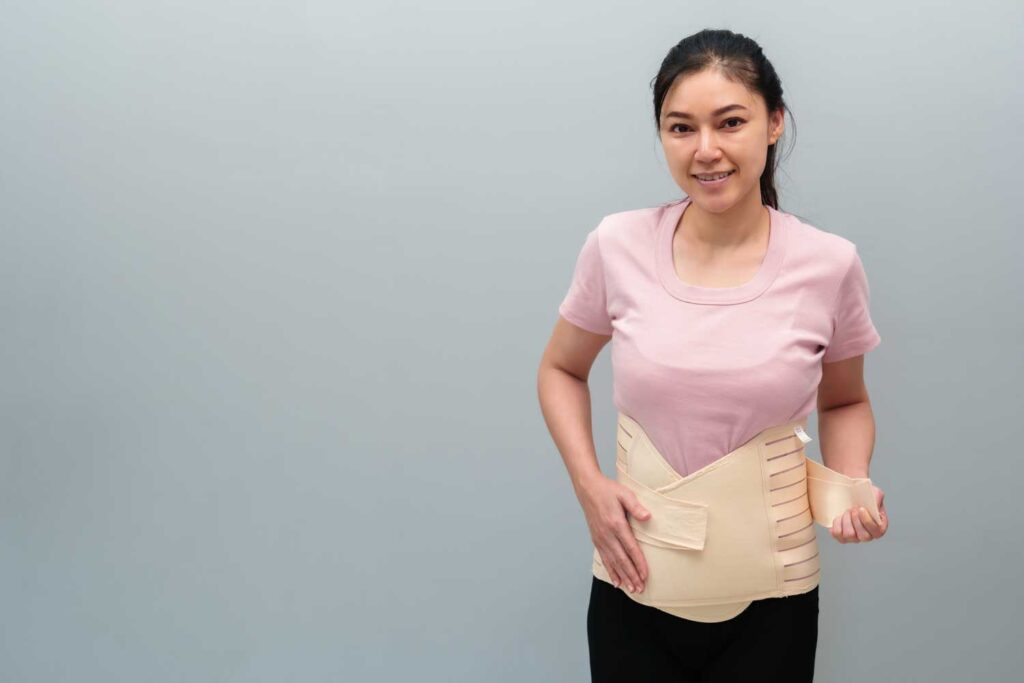
Subscription Pop-up
Some even claim that abdominal binders can help close separated abdominal muscles, a condition called diastasis recti. Though this claim has not been scientifically proven, many women (self included) wear c section belly bands after pregnancy in hopes it will help.
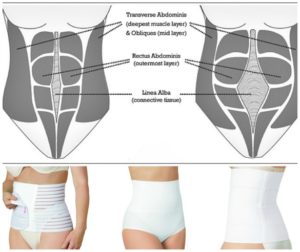
In addition to helping close separated ab muscles (or “proximate” your abs, as PTs say), other purported benefits associated with wearing a support belt postpartum include helping the uterus shrink back down to size, alleviating pain, increasing comfort (allowing you to walk farther and get back to doing your normal activities sooner), and protecting the c-section incision.
One thing’s for sure: C Section belly bands don’t help you lose fat (or actual weight).
Doctors and Studies Say About Postpartum Belly Bands…
fAt the end of the day, some doctors like and recommend postpartum girdles, while others think they are a complete waste of time. To make matters even more confusing, most of the research on belly bands has been done on general surgical patients, and not specifically postpartum mamas.
A problem with all of this research on binders is the timing: so far, studies only look at results a few days post-surgery. All of the measurements from the previously discussed studies (pain scores, walking tests, etc.) were taken only 1-5 days after procedures. It makes you wonder what the longer-term positive effects of abdominal compression may be?
My Experience With C Section Belly Bands
As an aside, I (Marissa) used an abdominal binder after both of my cesarean sections (note: they were given to me each time by the hospital). Personally, I really liked wearing it. It made me feel more secure when moving around (or you know, breathing), and felt like it was holding together my severed ab muscles. I also held out hope that it eventually would help heal my diastasis recti (yet here we are 18 months postpartum, and no such luck…). Bottom line: I had a good experience and wouldn’t hesitate to wear a binder again. See also: what to wear after a c-section. I felt it provided both abdominal support and hip support.
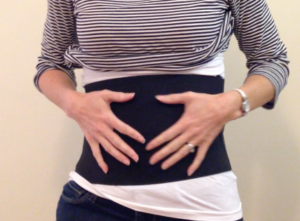
Why We Love A Postpartum Belly Band
The good news is that there appear to be virtually no harmful effects associated with using an abdominal binder, although the tighter binders prescribed for some of the diastasis rehab programs can cause dizziness and shortness of breath.
What Doctors Say About About Postpartum Belly Bands
When I (Brittany) asked my brother, a surgical resident, and a friend, an OB resident, about the use of a postpartum wrap, they both indicated that compression bands are really a matter of preference. Some patients don’t like them and choose not to use them even when advised, while others enjoy them. In turn, some surgeons see them as more helpful while others think they are futile.
Bottom Line: The Benefits of PostPartum Belly Wraps
Whether you choose to use an abdominal binder is truly up to you — they may help, and they really can’t hurt, so if you want to try it out, go for it (and then report back to us with your findings!)
If you decide to use an recovery belt after giving birth, here are some highly-rated options:
Recommended Products: Types of Postpartum Belly Wraps and Bindings
See also what to wear home after a c-section, which includes some incision-protection underwear.
Did you know that some postpartum recovery support garments, such as belly bands/binders, compression socks, etc. may be covered by your insurance? (BellyBandit is one such company, Aeroflow is another…)
If this isn’t the case for you, however, these recovery products are also eligible for reimbursement with your FSA/HSA/HRA account. Woohoo!
3 in 1 Postpartum Girdle ~ $25
The 3-in-1 Postpartum Girdle is affordable and highly rated. With it, you get three belts: a belly belt, a waist belt and a pelvic belt. The belly belt helps to repair abdominal muscles and claims to bring your abs back together; the waist belt aids in back pain relief and c-section incision recovery; and the pelvis belt helps relieve pelvic pain and weakness postpartum. It is a great way to help support your entire core section hence the name 3-in-1 postpartum support.
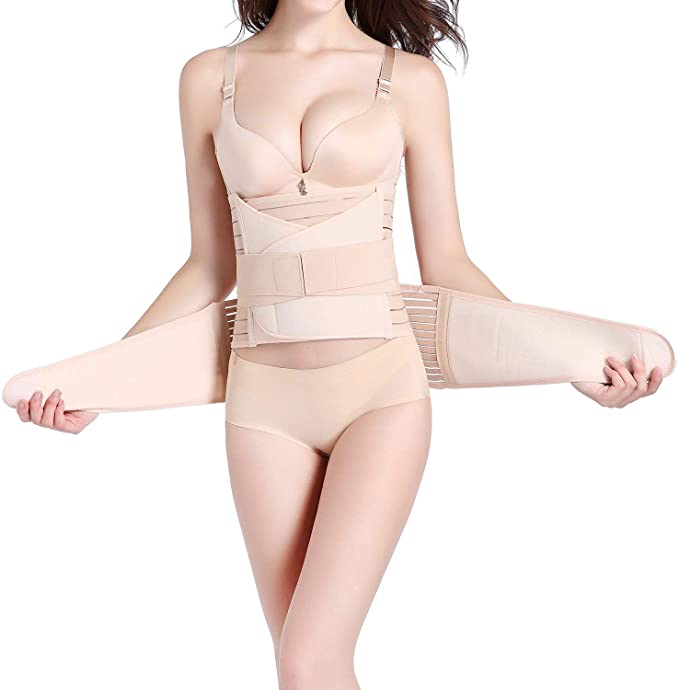

Belly Bandit ~ $49
Postpartum moms can wear the ever-popular Belly Bandit right away. It’s recommended that this band be worn every day, all day, for a minimum of 6-8 weeks after giving birth. Belly Bandit has a wide variety of different types and styles of bands, but they all claim to “reshape your waist, hips, and belly.” Some users rave about the Belly Bandit, saying it really helped with healing and trimming the tummy, while others say it’s not worth the money. We love many of their products including the belly bandit b.f.f.
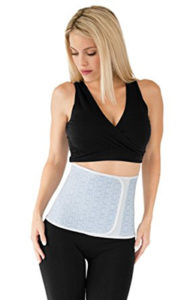

Bellefit Postpartum Corset ~ $128
This band has a medical-grade abdominal panel that protects and helps heal the abdomen and c-section incision. The corset has adjustable front hook-and-eye closures, as well as a flap that un-hooks at the crotch to make bathroom breaks easier (and we all know how often those occur postpartum!). Users seem to love this corset, and many note that it helped them feel more confident and less “jiggly in the belly” after giving birth.
*The best way to find your size is to use the Bellefit sizing tool.
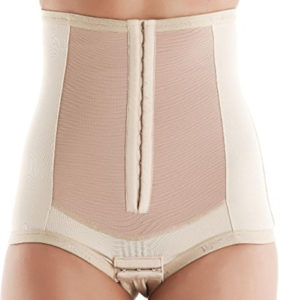

Marissa’s Bellefit Experience After Abdominal Surgery
I recently had abdominal surgery to repair an umbilical hernia and diastasis recti (separated abdominal muscles), both of which occurred during my twin pregnancy.
After my operation, the hospital gave me an abdominal binder and told me to wear it 24/7 for 6-8 weeks post surgery. But as my abdominal swelling started to decrease, the band became looser around my belly, and thus, much less effective. It also started chafing my super sensitive belly button. Enter the Bellefit.
When I first saw the Bellefit, I laughed. It looks like a mix between a torture device—that is one tight corset!—an S&M piece and, as my husband put it, a “you shall not enter!” chastity bodysuit. I also thought it was going to be super tough to put on and uncomfortable to wear (particularly because it snaps together in the, ahem, nether regions).
But that wasn’t the case. I just followed the instructions on the back, and it was simple. The hooks latch easily, and there are two latch positions so it doesn’t matter if your frame is narrow or wide — your Bellefit (assuming you order the correct size) should fit.
Back and Hip Support
I feel very secure and completely held together in it. It gives me great confidence when I’m around my kids (I feel more protected–like if they do accidentally kick me or run into my belly, I won’t double over in pain), and during my day-to-day activities. It also relieves my lower back pain, which is something I’ve struggled with since my diastasis became so large. I honestly want to wear this thing even after I’m fully healed (Spanx, anyone??!).
Bottom Line: I’ve been wearing the Bellefit for about a week now, and I’ve done my best to keep it on most of the day and even through the night. The only truly annoying thing is that I have to undo the “crotch snaps” (sorry…crass, I know!) every time I have to go to the bathroom. This drives me especially crazy in the middle of the night. But other than that, I’m a big fan of the Bellefit. I wish I would have used it after my c-sections; maybe my diastasis wouldn’t have gotten so bad if I had? Who knows. Whatever the case, I’m just happy to be wearing it now.
If you try one of these, please report back your findings by leaving a comment below. Thanks!!
– Brit, Marissa and Meg
Back to Postpartum
References
[i]
Oren Cheifetz et al., “The Effect of Abdominal Support on Functional Outcomes in Patients Following Major Abdominal Surgery: A Randomized Controlled Trial,”
Physiotherapy Canada62, no. 3 (2010): 242–53, doi:10.3138/physio.62.3.242; Emine Arici, Sevinc Tastan, and Mehmet Fatih Can, “The Effect of Using an Abdominal Binder on Postoperative Gastrointestinal Function, Mobilization, Pulmonary Function, and Pain in Patients Undergoing Major Abdominal Surgery: A Randomized Controlled Trial,”
International Journal of Nursing Studies62 (October 1, 2016): 108–17, doi:10.1016/j.ijnurstu.2016.07.017.
[ii]
Christin M. Gillier et al., “A Randomized Controlled Trial of Abdominal Binders for the Management of Postoperative Pain and Distress after Cesarean Delivery,”
International Journal of Gynaecology and Obstetrics: The Official Organ of the International Federation of Gynaecology and Obstetrics133, no. 2 (May 2016): 188–91, doi:10.1016/j.ijgo.2015.08.026.
[iii]
Samieh Ghana et al., “Randomized Controlled Trial of Abdominal Binders for Postoperative Pain, Distress, and Blood Loss after Cesarean Delivery,”
International Journal of Gynaecology and Obstetrics: The Official Organ of the International Federation of Gynaecology and Obstetrics137, no. 3 (June 2017): 271–76, doi:10.1002/ijgo.12134.
I totally agree with you that this girdle had rightfully earned this first position on the list. I really found a great ease with its use. I am highly comfortable wearing it to work even with my off-the-shoulder tops. It’s a great postpartum girdle.
I wore a Belly Bandit after the birth of my son for the first 8 weeks. It really helped with that odd feeling of everything not being back in place yet, and also held everything together so that I could go out for walks pretty easily by three weeks post. I personally feel like it helped me get back to feeling “normal” quicker, but I have no real proof for that. have it ready to go again, as I am expecting twins in 6 weeks or less. Hoping for similar positive results.